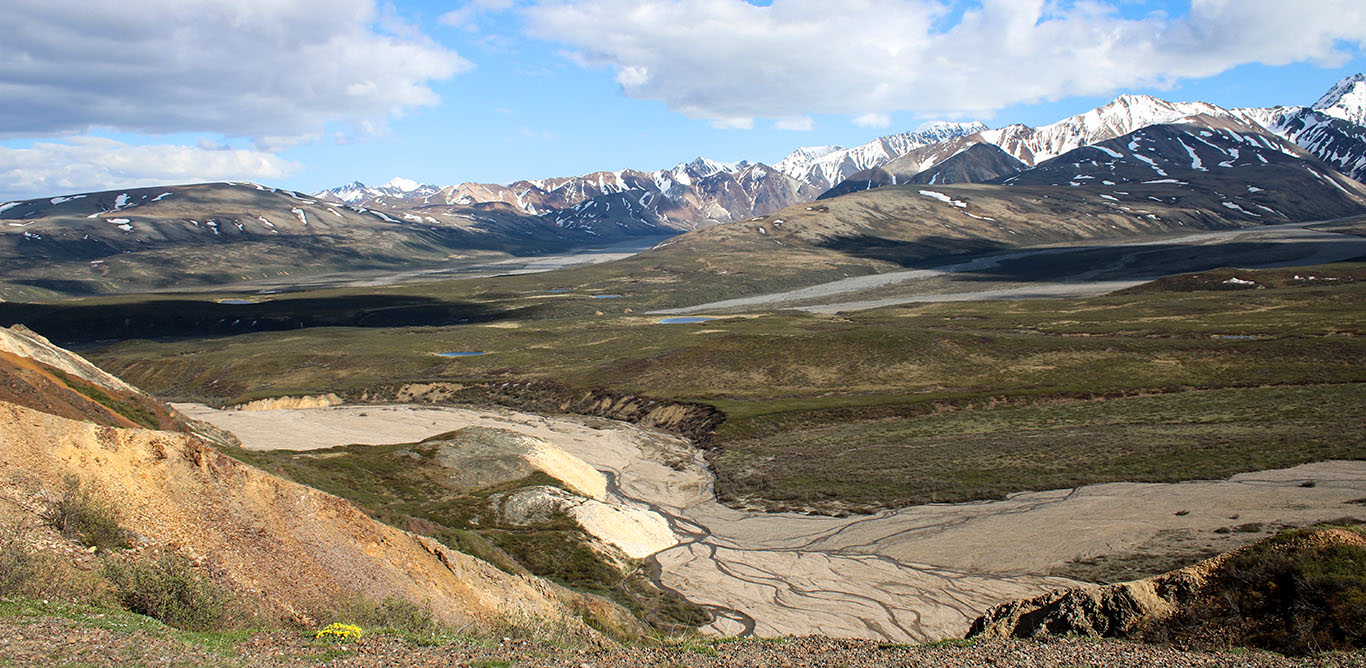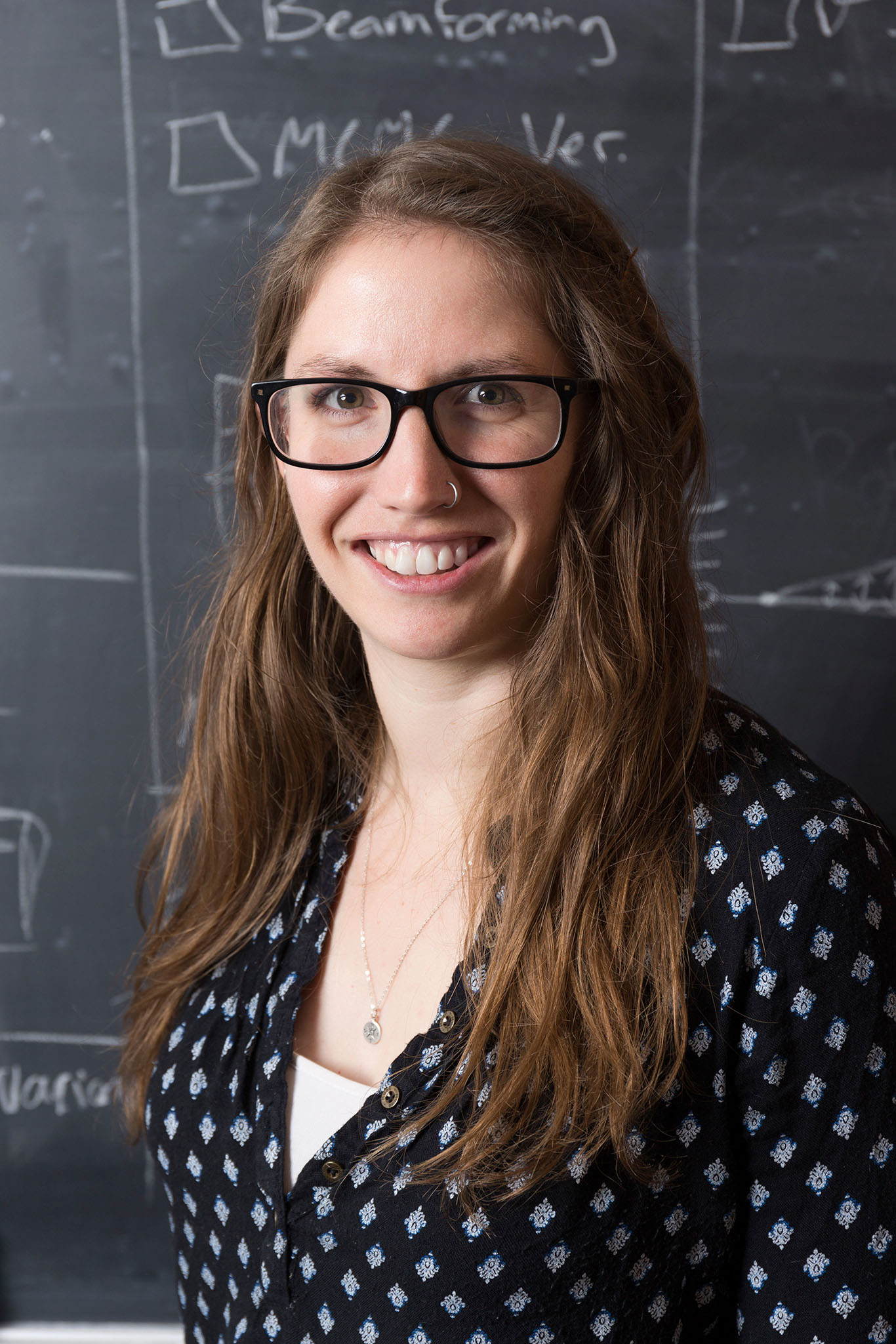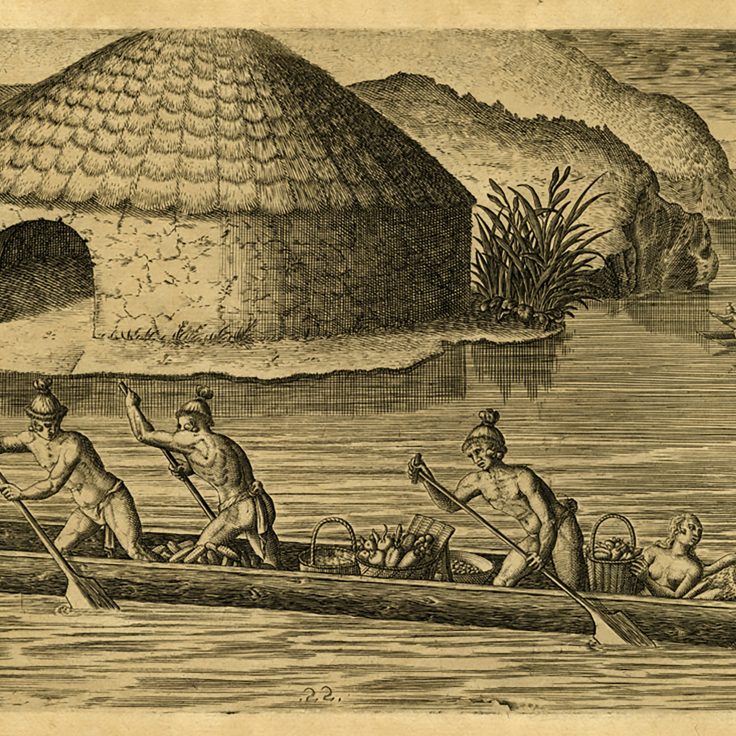
The summertime tundra in Denali National Park and Preserve.
Above and Below
Geologist Stephanie James applies a novel technique to understand permafrost thaw.
Sitting on a sun-drenched picnic table outside the Hub at the University of Florida, Stephanie James PhD’17 recalls the more pleasant summers she’s spent in Alaska. At the tail end of the hottest summer on record, James discusses how her PhD research on seismic waves can promote understanding of permafrost thaw. Her unique application of seismometry in shallow depths has been the cornerstone of her two PhD projects in the Department of Geological Sciences and two research internships with Sandia National Laboratory.
Geologists are often misperceived as scientists with impressive rock collections. As much as James appreciates a fine schist, she is the type of geologist who studies contemporary changes in the subterranean world as they relate to seasons and overall climate change. To understand these dynamics, she measures the energy of naturally generated, high-frequency seismic waves that travel downward through the earth.
 Stephanie James
Stephanie James“We could monitor active layer dynamics and see if the active layer is getting thicker with time, which means permafrost is thawing. This can lead to breaks in infrastructure and changes in groundwater flow patterns, as well as exacerbate climate change.”
James’ first project at UF was a pioneering effort to use ambient noise, from traffic, construction, and other human activities, to create images of the Florida aquifers using these seismic waves. This research used “a novel technique that’s never been tried at this shallow depth for imaging aquifers,” she says. Usually, destructive techniques such as explosions are needed to produce acoustic waves for this type of measurement.
Seismic waves change velocity as they move through underground structures, and that change can be measured by seismometers. Geologists use those measurements to map everything from aquifers to mountains to get a better picture of what’s underneath. If that picture changes, it could have above-ground ramifications. Major shifts in the solidity of the underground cause subsidence, which can devastate the structures built atop it. For example, as groundwater passes through and erodes the limestone that composes most of Florida, it alters the composition of the aquifer. Thus, changes in groundwater flow contribute to the development of sinkholes.
James’ shallow-depth seismometry of ambient noise also works in a very different landscape — the Alaskan tundra. Permafrost is permanently frozen sediment and water that forms a substantial portion of the topography of the Earth’s colder regions. The upper layer of the Alaskan tundra thaws to a certain degree every summer. For James’ primary PhD project, she’s examining whether changes in this “active layer” can be reliably measured using seismic waves. However, as global temperatures rise, the lower layers of true permafrost are thawing as well. James’ most recent project targets this phenomenon directly. “We could monitor active layer dynamics and see if the active layer is getting thicker with time, which means permafrost is thawing. This can lead to breaks in infrastructure — roads, pipelines — and changes in groundwater flow patterns, as well as exacerbate climate change,” she says. In other words, in areas with permafrost, subsidence can cause a house to end up slanted, or, more seriously, trigger rockslides, and the release of carbon stored in previously frozen permafrost may contribute to the greenhouse effect.
Through her first internship at Sandia National Laboratory, a key environmental research outlet for the US Department of Energy, she’s applying her technique to two years of ambient noise data to analyze and predict changes in subterranean structures due to seasonal thaw of the sediment above the permafrost. In her second internship, she’s focusing on permafrost thaw related to global warming.
James’ research in Alaska aims to discover “where it’s thawing, how fast it’s thawing, and how best to measure it.” She has three seismometer stations set up around a controlled thaw site in Fairbanks. Because the composition of the earth has slightly changed, the waves pass through it at different velocities depending on how much of the permafrost is thawed. “The waves move faster in the winter when the ground is fully frozen and slower when the active layer is thawed in the summer,” she explains. “A deeper thaw would produce a notable change in seismic waves.” In the long game of global warming, she’s looking for “changes in the velocity of scattered waves across time.” By modeling those changes with seismic waves, she and her colleagues at Sandia hope to be able to predict the endgame and its environmental effects.
James’s passion for geology evolved from her childhood interest in paleontology. She started her higher education at Colorado State University, where she double-majored in geology and zoology. “I fell in love with geology,” she says. “I loved hydrology and geophysics, and I’d always liked math.” She appreciates the balance between traveling to the field site and analyzing data in her office. Appropriately, her extracurricular activities of choice involve quality time spent with the earth; she loves hiking and camping, and she recently visited the Grand Canyon for the first time. Her on-campus life includes her presidency of UF’s chapter of the Society of Exploration Geophysicists (SEG), which hosts “Bad Science Movie Nights,” the first of which featured the rare disaster movie with a geologist hero, 2003’s The Core. “Any scientist character in any movie just knows everything,” she says with a laugh.
Perhaps the issue with popular conceptions of scientists is that the range of each field is largely cut down to what suits the story. Geology is a lot more than the study of rocks; the breadth of research topics actually undertaken by geologists is comparable in size to a mountain range. A deep understanding of the interactions among rocks, soil, water, and trees is crucial to sustainable engineering, environmental protection, and disaster prevention. With two internships under her belt, James is primed for an eventual job at Sandia or another such laboratory, or, she says, with the United States Geological Survey. Her efforts to study the world below may help save the tundra — and, perhaps, show the world what a real geologist hero looks like.


